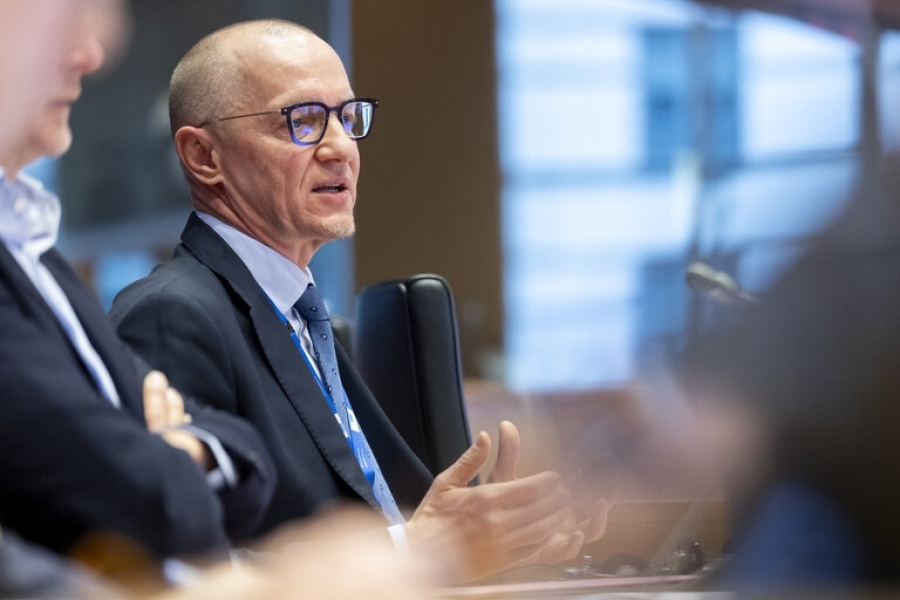The European Parliament’s Environment Committee adopted its proposals to better prevent and reduce waste from food and textiles across the EU.
Every year, 60 million tonnes of food waste (131 kg per person) and 12.6 million tonnes of textile waste are generated in the EU.
Clothing and footwear alone account for 5.2 million tonnes of waste, equivalent to 12 kg of waste per person every year. It is estimated that less than 1% of all textiles worldwide are recycled into new products.
On Wednesday, MEPs in the Environment Committee adopted their position on the proposed revision of the Waste Framework Directive, by 72 votes in favour, none against and three abstentions.
More ambitious food waste reduction targets
MEPs want to increase the binding waste reduction targets proposed by the Commission to at least 20% in food processing and manufacturing (instead of 10%) and to 40% per capita in retail, restaurants, food services and households (instead of 30%), in comparison to the annual average generated between 2020 and 2022.
EU countries would need to ensure that these targets are achieved at national level by 31 December 2030.
MEPs also want the Commission to evaluate the possibility and make appropriate legislative proposals to introduce higher targets for 2035 (at least 30% and 50% respectively).
Extended producer responsibility for textile products, clothing and footwear.
The new rules, as adopted by MEPs, would set up extended producer responsibility (EPR) schemes, through which economic operators that make textiles available on the EU market would cover the costs for their separate collection, sorting and recycling.
Member states would have to establish these schemes 18 months after the entry into force of the directive (compared to 30 months proposed by the Commission).
In parallel, EU countries would need to ensure, by 1 January 2025, the separate collection of textiles for re-use, preparing for re-use and recycling.
These rules would cover textile products such as clothing and accessories, blankets, bed linen, curtains, hats, footwear, mattresses and carpets, including products that contain textile-related materials such as leather, composition leather, rubber or plastic.

ENVI – Exchange of views with Dr. Bernhard URL, Executive Director of the European Food Security Authority (EFSA)
Parliament is scheduled to vote on its position during the March 2024 plenary session. The file will be followed up by the new Parliament after the European elections on 6-9 June.
What is a Circular Economy?
The concept of a Circular Economy revolves around the idea of creating a sustainable system where resources are utilized efficiently, products are designed for longevity, and waste is minimised through recycling and reuse.
Unlike the traditional linear economy, which follows a “take-make-dispose” model, the circular economy aims to close the loop, keeping resources in use for as long as possible and extracting maximum value from them.
At its core, the Circular Economy is guided by three key principles: reduce, reuse, and recycle.
Reduction involves minimising resource consumption and waste generation by adopting practices such as product redesign, energy efficiency measures, and conservation efforts.
Reuse encourages the prolongation of product lifespan through repair, refurbishment, and sharing schemes, thus reducing the need for constant production of new goods.
Recycling focuses on recovering materials from end-of-life products and reintroducing them into the production cycle, mitigating the demand for virgin resources and decreasing environmental impact.
This approach offers several benefits, including resource conservation, energy savings, and pollution reduction.
By keeping resources in circulation, the Circular Economy reduces the pressure on finite natural resources and minimises the environmental degradation associated with extraction and production processes.
It also fosters innovation by encouraging businesses to adopt sustainable practices, develop eco-friendly products, and explore alternative materials and technologies.
Moreover, the Circular Economy presents economic opportunities by creating new markets for recycled materials, promoting job growth in recycling and remanufacturing sectors, and enhancing the resilience of supply chains.
Transitioning towards a circular model requires collaboration among stakeholders, including governments, businesses, consumers, and non-governmental organisations.
Policy interventions, such as extended producer responsibility laws and incentives for sustainable practices, can facilitate this transition and incentivise businesses to embrace circularity.
While the Circular Economy holds promise for addressing pressing environmental challenges and promoting sustainable development, its widespread adoption requires concerted efforts and collective action.
Overcoming barriers such as economic incentives, consumer behavior, and infrastructure limitations will be crucial in realizing the full potential of this transformative concept.
Through continuous innovation, collaboration, and commitment to sustainability, the Circular Economy offers a pathway towards a more resilient and regenerative future.
Main images: Alain ROLLAND © European Union 2024 – Source : EP
Read also:
A Tangled Web Of Intrigue & Corruption In The European Parliament
_________________________________________________________________________________________________________________

Follow EU Today on social media:
Twitter: @EU_today
@EU_sports
Facebook: https://www.facebook.com/EUtoday.net/
https://www.facebook.com/groups/968799359934046
YouTube: https://www.youtube.com/@eutoday1049
_________________________________________________________________________________________________________________







